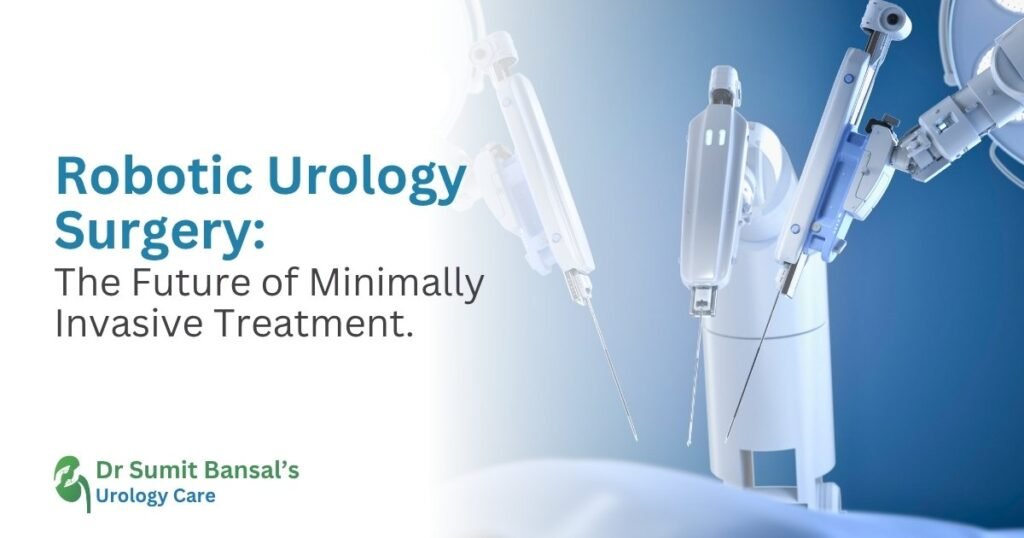In the realm of modern medicine, robotic urology surgery stands at the forefront of innovation, offering patients in India and globally a transformative approach to treatment. Dr. Sumit Bansal, a distinguished urologist with over a decade of experience, exemplifies this advancement through his expertise in robotic-assisted procedures. Operating out of Gurugram, Haryana, Dr. Bansal has been instrumental in integrating cutting-edge technology into urological care, ensuring patients receive the most precise and effective treatments available.
What Is Robotic Urology Surgery?
Robotic urology surgery involves the use of robotic systems, such as the da Vinci Surgical System, to perform complex urological procedures with enhanced precision and control. These systems allow surgeons to operate through small incisions, providing a magnified 3D view of the surgical area and translating the surgeon’s hand movements into smaller, more precise actions at the surgical site
Dr. Sumit Bansal: A Pioneer in Robotic Urology
- Dr. Bansal’s journey in robotic urology surgery is marked by his commitment to advancing patient care. After completing his MCh in Urology and Renal Transplantation from the prestigious LTMMC & LTMGH in Mumbai, he further honed his skills with specialized training in robotic surgery . As a certified Da Vinci robotic surgeon, Dr. Bansal has successfully performed over 500 kidney transplants with a remarkable success rate exceeding 95%
His proficiency extends to various minimally invasive procedures, including the laser treatment of urological stones, prostate disorders, and urological cancers. Dr. Bansal’s approach emphasizes precision, reduced recovery times, and improved patient outcomes, aligning with the global shift towards minimally invasive surgical techniques.
The Advantages of Robotic Surgery in Urology
Robotic-assisted urological procedures offer several benefits over traditional open surgeries:
Enhanced Precision: Robotic systems provide high-definition, magnified views of the surgical area, allowing for meticulous dissection and suturing
Minimally Invasive: Smaller incisions lead to reduced pain, scarring, and faster recovery times for patients.
Improved Outcomes: Studies have shown that robotic-assisted procedures often result in fewer complications, shorter hospital stays, and quicker returns to normal activities.
Greater Flexibility: The robotic arms can articulate in ways that are not possible with traditional laparoscopic instruments, enabling surgeons to perform complex maneuvers with ease.
The Future of Robotic Urology Surgery
The integration of artificial intelligence (AI) and machine learning into robotic systems is poised to further revolutionize urological care. AI can assist in preoperative planning, intraoperative navigation, and postoperative monitoring, enhancing the overall surgical experience and outcomes for patients .
Additionally, the development of haptic feedback systems and advanced simulation platforms will improve surgical training and precision, ensuring that the next generation of urologists is well-equipped to handle complex procedures
Conclusion
Robotic urology surgery represents a significant leap forward in the field of minimally invasive treatment, combining technological innovation with expert surgical practice. Dr. Sumit Bansal’s dedication to advancing urological care through robotic-assisted procedures underscores the transformative potential of this approach. As technology continues to evolve, patients can look forward to even more precise, efficient, and effective treatments, heralding a new era in urological healthcare.


